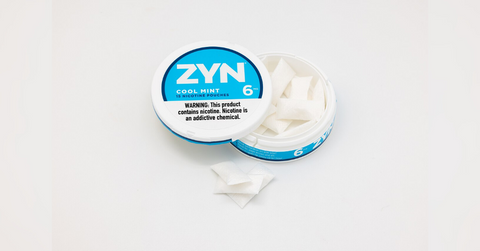 NEWS
NEWSZYN Nicotine Pouches Win FDA Green Light in Major US Market Shift
Aug. 18 2025, Published 1:19 a.m. ET
The US nicotine pouch market got a major shake-up this year. The Food and Drug Administration has granted Philip Morris International’s ZYN brand the right to market 20 nicotine pouch products in the United States. The authorization covers flavors including Wintergreen and the unflavored Chill, each available in 3 mg and 6 mg strengths. For PMI, the decision is largely considered a market windfall. The company’s stock surged as investors reacted to the news, cementing ZYN’s place as the industry’s most influential smokeless nicotine product.
Unlike traditional tobacco, ZYN contains no leaf or stems and requires no combustion. Each small, teabag-like pouch delivers powdered nicotine, non-caloric sweeteners, and flavoring. Users tuck the pouch under their upper lip for up to an hour, allowing the nicotine to absorb through the mouth’s lining. The nicotine levels are slightly higher than those found in standard nicotine gum, but they deliver a steadier, slower peak compared to cigarettes. The FDA’s review was thorough. Officials weighed potential population-level benefits and risks, including the impact on non-users and youth. A 68-page summary of the decision concluded that harmful chemical levels in ZYN were undetectable, and studies showed promising switching behavior among adult smokers. In one study, more than 60% of current tobacco users reported using ZYN to cut down or quit smoking entirely, while nearly a quarter switched completely. While PMI stops short of marketing ZYN as a cessation aid, the FDA determined the product met the Tobacco Control Act’s public health criteria, though some argue the real controversy lies in how long the decision took.
Marketing, Access, and the Discreet Appeal of ZYN
ZYN’s rise is as much about branding and accessibility as it is about regulatory clearance. The pouch format fits neatly into modern lifestyles: no smoke, vapor clouds, or telltale odor.
Marketed as convenient, discreet, and simple, ZYN has positioned itself as a nicotine solution for nearly any setting. Advertising for ZYN and similar pouch brands often avoids the overtly rebellious tone associated with cigarettes or the flashy tech image of vaping. Instead, the messaging focuses on lifestyle integration; whether someone is on a morning commute, in the office, or at a late-night event, the pouches fit seamlessly into the moment. Unlike vaping, there’s no cloud to signal use, and unlike cigarettes, there’s no need to step outside. This discretion has been key to ZYN’s crossover into multiple demographics, from urban professionals to people in remote regions. In fact, a Johns Hopkins Bloomberg School of Public Health study examined US nicotine pouch advertising from 2021 to 2023, revealing a shift in marketing strategies. The tobacco industry increasingly promoted flavors and highlighted this convenience and discretion. Researchers noted the review period coincided with greater brand investment and rising young adult use.
Want OK! each day? Sign up here!
Online platform Prilla has supercharged nicotine pouch availability, letting users order ZYN pouches directly to their door. Initially launched in Colorado and Montana, the brand’s US expansion has been swift, with product lines tailored to American preferences. The online catalog features an array of flavors developed specifically for the domestic market, adding to its consumer pull. Behind the scenes, ZYN has also tapped into loyalty-driven engagement. QR codes on tins connect users to rewards programs, where points can be redeemed for merchandise ranging from apparel to electronics. This gamified approach strengthens brand connection without direct influencer campaigns, though social media has birthed a subculture of “Zynfluencers” organically sharing their experiences. By late last year, ZYN commanded 65.5% of all US nicotine pouch sales by volume. The surge in demand even caused shortages, sparking a rush that further amplified the brand’s cultural footprint.
Where ZYN Goes From Here
For PMI, CEO Jacek Olczak has stated that he wants ZYN to become to nicotine pouches what Marlboro once was to cigarettes: the global standard. The company’s transition strategy leans heavily on smoke-free products, with a goal of generating over two-thirds of revenue from such alternatives by 2030. International expansion is already underway. PMI sees emerging pouch markets as ripe for rapid capture, with leadership achievable in as little as one or two years in some regions. In the US, demand remains robust, even with recent quarterly shipment figures of 190 million cans falling short of analyst expectations of 203 million. Still, volumes rose nearly 24% year-over-year, underlining the category’s growth potential. The competitive landscape remains in flux. Other brands like On!, Velo, and Rogue continue to push into the market, but ZYN’s first-mover advantage, high visibility, and diversified flavor portfolio keep it ahead of the curve. With online and retail channels expanding, the brand is well-positioned to maintain its lead. What’s next will hinge on supply stability, continued regulatory compliance, and cultural resonance. PMI’s challenge will be balancing mass appeal with the kind of discretion and accessibility that has fueled ZYN’s rise.



